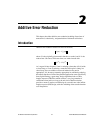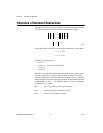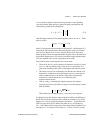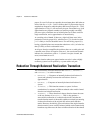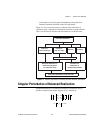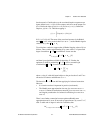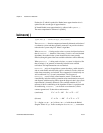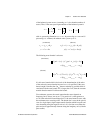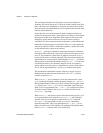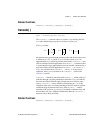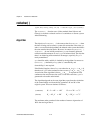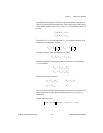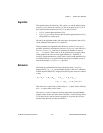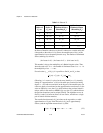
Chapter 2 Additive Error Reduction
© National Instruments Corporation 2-9 Xmath Model Reduction Module
of the balanced system occurs, (assuming nsr is less than the number of
states). Thus, if the state-space representation of the balanced system is
with A
11
possessing dimension nsr × nsr, B
1
possessing nsr rows and C
1
possessing
nsr columns, the reduced order system SysR is:
The following error formula is relevant:
It is this error bound which is the basis of the determination of the order
of the reduced system when the keyword
bound is specified. If the error
bound sought is smaller than , then no reduction is possible which is
consistent with the error bound. If it is larger than , then the constant
transfer function matrix D achieves the bound.
For continuous systems, the actual approximation error depends on
frequency, but is always zero at ω = ∞. In practice it is often greatest at
ω = 0; if the reduction of state dimension is 1, the error bound is exact, with
the maximum error occurring at DC. The bound also is exact in the special
case of a single-input, single-output transfer function which has poles and
zero alternating along the negative real axis. It is far from exact when the
poles and zeros approximately alternate along the imaginary axis (with the
poles stable).
A
A
11
A
12
A
21
A
22
= B
B
1
B
2
=
C
C
1
C
2
=
x
·
1
A
11
x
1
B
1
u+=
yC
1
xDu+=
(continuous) (discrete)
x
1
k 1+()A
11
x
1
k() B
1
uk()+=
yk() C
1
x
1
k() Du k()+=
CjωIA–()
1–
[]C
1
jωIA
1
–()
1–
B
1
D+()[]–
∞
2 σ
nsr 1+
σ
nsr 2+
... σ
ns
+++[]≤
(continuous)
Ce
jω
IA–()
1–
BD+[]C
1
e
jω
IA
1
–()
1–
B
1
D+[]–
∞
2 σ
nsr 1+
σ
nsr 2+
... σ
ns
+++[]≤
(discrete)
2σ
n
s
2trΣ



